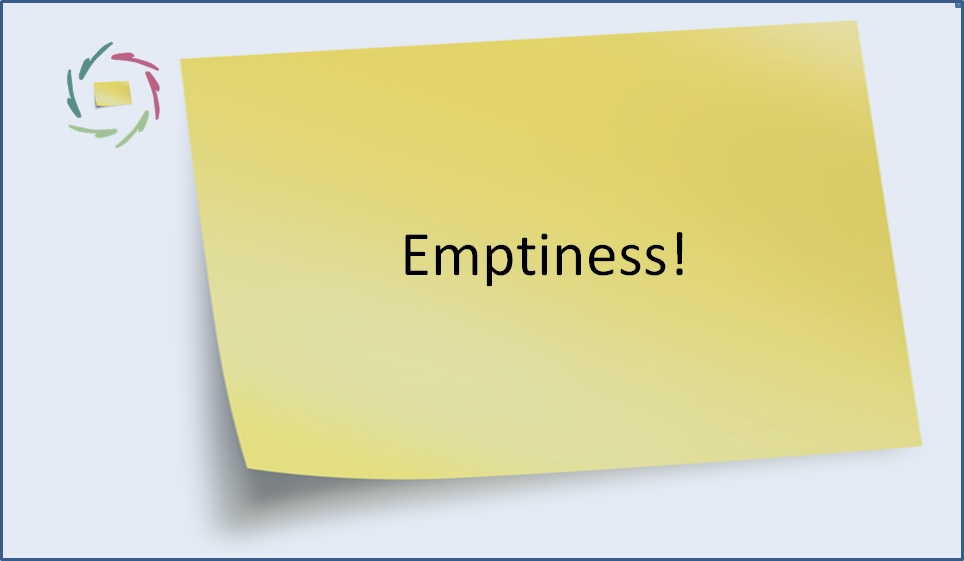41. Emptiness!

Dear reader, let me take you on a journey to Emptiness. No, I have not suddenly become a fan of nothingness or nihilism. Neither did I invent/discover the concept of Emptiness. I’m too late for that. It was already invented/discovered some 1800 years ago by an Indian guy called Nagaryuna. Thanks to him, it became a central concept of Mahayana Buddhism. As such, it is also central in the Chinese ‘Chan’ and the Japanese ‘Zen’.
◊◊◊
Emptiness is not empty.
◊◊◊
Of course, in order to know what one is talking about, it’s interesting to know what one is not talking about. Emptiness is not empty. Actually it has nothing to do with being empty or not empty, in the sense that it can coincide with both. On the other hand, ‘Emptiness’ is a good term. So it’s interesting to keep it.
◊◊◊
Emptiness is a state of mind.
◊◊◊
Emptiness is all about how you use the perceptual system that is your mind. It is in fact a kind of ‘openness’, but a very, very, very deep kind. The kind that you reach by using your mind (look at it as perceptual system) more as a whole instead of the usual flimsy patchwork. Outrageously weird? Not at all. It happens frequently, to many people. It’s called ‘being raptured’. One can be raptured by many things: a piece of art, a sight of nature, or both of these together in the guise of a beautiful woman… These are just some examples. Being raptured can ‘blow your head off’ as is sometimes depicted in a cartoon when a guy sees a very beautiful girl. In other circumstances, it is sometimes said as ‘she is to die for’.
◊◊◊
And there is truth in this. It’s a bit like ‘dying’. It’s of course also when you feel most alive. Maybe you do die and are instantly reborn. It can certainly feel that way. But let’s come back to Emptiness, because we’re not finished with that.
◊◊◊
‘Being raptured’ is about getting there.
Emptiness is about being there.
◊◊◊
Yes, in being raptured, we are close to Emptiness, but we miss a central point. This is when the movement of getting there (which can itself be ‘explosive’ or precisely not) turns into the stillness of being there, and you also actually do something yourself instead of only getting knocked off your feet. But here it becomes very difficult to explain. Ah! Did I create false expectations? Zen talks about not-thinking as the highest form of thinking. One can also call it parallel thinking: not going in your thoughts from A to B to C, but : ABC. Got it? I cannot say it more clearly than this. And I’m not ashamed. Neither could Nagaryuna.
◊◊◊
You might also try some very deep meditation.
That’s what it’s about.
◊◊◊


